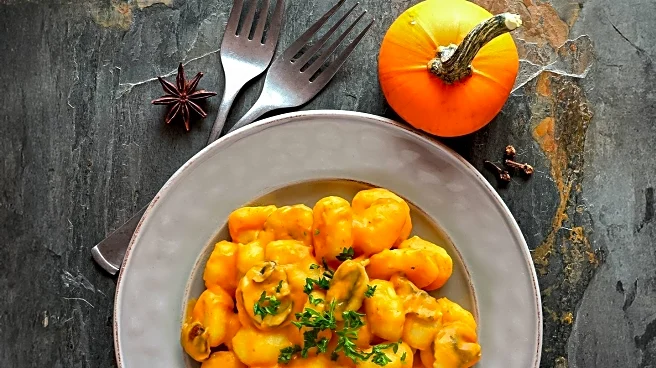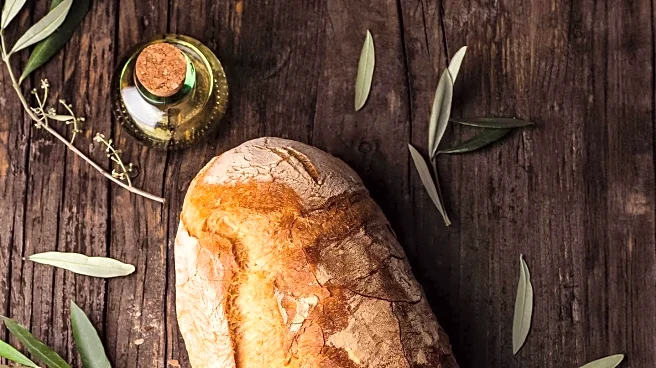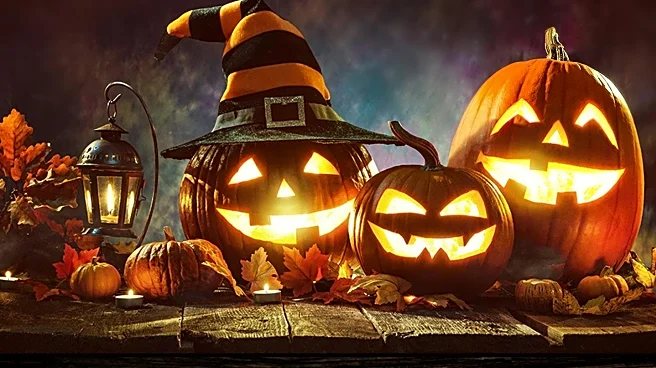What's Happening?
Pumpkins, a staple of autumn, have a rich history that dates back thousands of years. The word 'pumpkin' evolved from the Greek 'pepon' to the French 'pompon,' and finally to the English 'pompion' in the 1500s. While the term has European roots, the plant itself is native to the Americas, cultivated by Indigenous peoples for millennia. Pumpkins have become symbols of nostalgia and simpler times, often associated with family farms and traditional values. The cultural significance of pumpkins has grown, with their imagery used in various contexts, from Halloween decorations to culinary delights like pumpkin spice lattes.
Why It's Important?
Pumpkins play a significant role in American culture, symbolizing the transition from summer to fall and the celebration of harvest. Their popularity reflects a romanticized view of agrarian life, appealing to consumers' desire for connection to nature and tradition. The economic impact is notable, as pumpkins drive seasonal sales in agriculture and retail, supporting small-scale farmers and local economies. The cultural attachment to pumpkins also influences consumer behavior, with products like pumpkin spice lattes becoming seasonal staples.
Beyond the Headlines
The pumpkin's journey from a staple crop to a cultural icon highlights broader themes of cultural adaptation and the blending of traditions. It underscores the role of agriculture in shaping cultural identity and the ways in which historical narratives influence modern consumer trends. The pumpkin's transformation into a symbol of nostalgia reflects societal shifts towards valuing heritage and sustainability.











